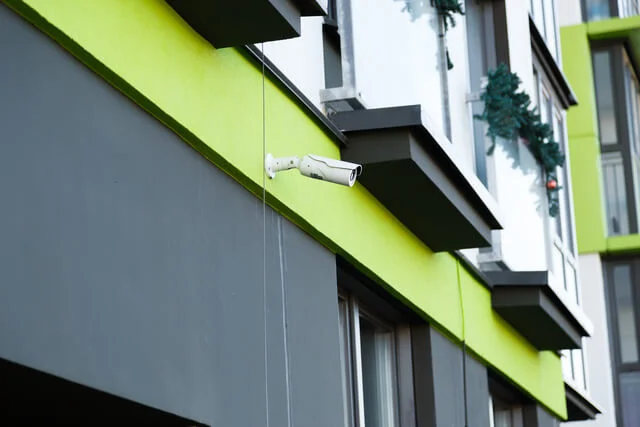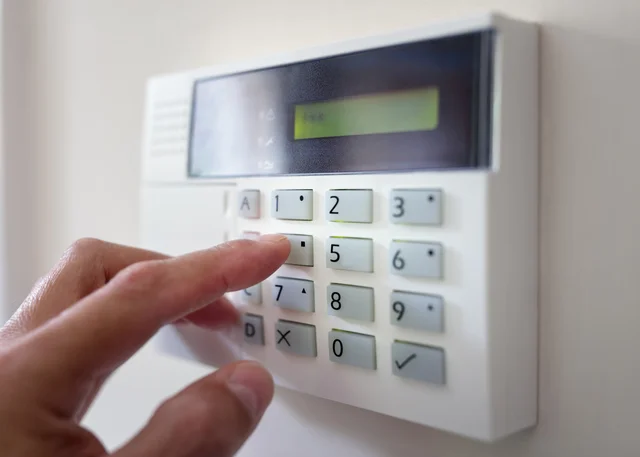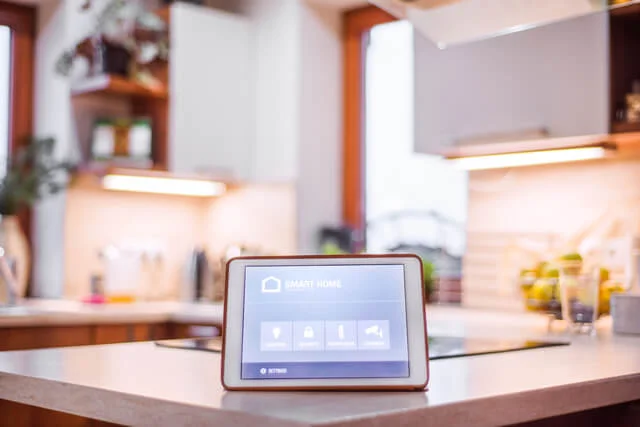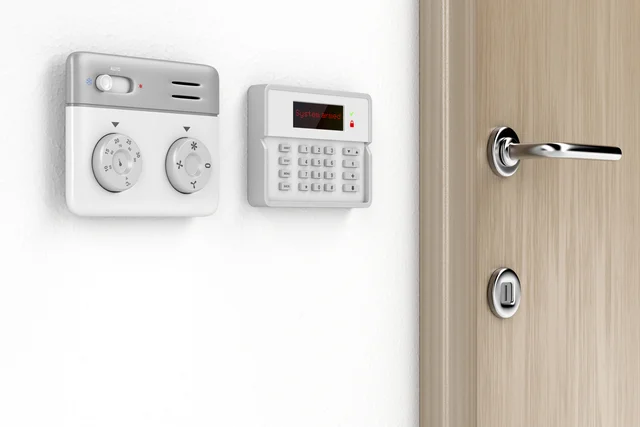
We all worry about the security of our homes, especially when we have a family to take care of. How do we make our homes as threat-proof as possible without turning it into Fort Knox? Obviously, nobody wants to live in a prison, but is there anyway of making your home completely safe from all intruders?
The answer to this question is quite obviously a no! If someone wants to get into your home, they will do, but there are many ways and means of ensuring that your home is as protected as it can be and also for ensuring that it doesn’t look like an easy target.
Intruders look for homes that appear vulnerable. If you have an open window or gate, or valuables in full view of anyone that happens to pass by, you are increasing the dangers of your home security being breached. One way in which you can repel any intruders is by having a clearly visible alarm fitted to the front and back of your home.
You can get some great “dummy” alarms that are less costly than full home security systems, but still look like the real thing. It just means that it isn’t worth the intruder breaking in to find out whether or not it is real!
Home Security Systems can be a little costly, especially if you decide to have a fully monitored system, as this generally includes annual subscription charges. However, a price cannot be put on you and your family’s safety. So if you can afford to pay more for a better quality system, it could prove to be a good investment, especially if you have suffered the traumatizing experience of having a break-in.
If used correctly, the security systems can be a great relief for you and your loved ones, and reduces a lot of aggravation. Claiming after a break-in, with the police and insurance companies, is a very time consuming and irritating process, and anything can reduce that risk, is obviously a good thing.
When thinking of investing in a home security system, you should think of how the cost outweighs the risk. Better quality systems will incur a bigger cost, but if you are in an area where home security is threatened regularly, the cost may be worth it in the long run. You should make sure you shop around for the best deals and arm yourselves with as much information as possible so you know exactly what options are available and how much different packages cost.
Don’t just opt in for the first one that you may see, as you could find that other companies may offer a cheaper deal. You should also find out exactly what is offered in your deal before you sign on the dotted line, and work out if there are any extra hidden charges you may have to fork out for.
There are so many options available, from the simplest to the ridiculously complicated depending on the level of security you are looking for. Obvious things like signs that say your home is protected and visible CCTV cameras and alarm systems are by far the easiest and cheapest way to make sure that an intruder knows that there will be trouble if he or she decides they want to break in to your house. Broadcast the fact that you are protected and you will have less of a risk than those who have no security whatsoever.
All in all, the decision of home security systems falls on you and your personal choices, but there are people and websites dedicated to helping you find the best ways to protect your home. After all, nobody can put a price on the safety of not only you, but your family as well, and we all know the devastating effects burglary has on a family. It really does pay to be protected.

Standard Home Security System Information
The standard home security system allows users to monitor interior and exterior areas. General features usually include sensors mounted at doors and windows. A motion sensor detects movement. The system is operated by a control center where commands are entered via touch keypad. Some systems are powered by battery and some are electric.
Home security systems can be optimized for location and need. Additional sensors can be added. Optional sensors include additional door/window sensors, motion sensors, smoke detection sensors, temperature change sensors, breakage and leakage sensors and latchkey sensors. Sirens are available for interior and exterior use. They sound loud alarms when triggered.
More sophisticated home security systems allow users to use closed-circuit television (CCT) and wireless video surveillance (VSS). This type of system connects to a television, VCR or DVR.
Before purchasing a home security system, a risk assessment should be performed. Many alarm and security companies provide free risk assessment. Once the required type of alarm is determined, an appropriate system can be purchased. The best place to purchase home security systems is from a reputable, local dealer. Even if the plan is for do-it-yourself installation, it’s best to get good equipment from a reliable source. If the need is for a more elaborate, sophisticated system, professional installation will probably be required.
Purchase from a licensed seller. Many states require businesses that provide alarm and security equipment and services to have special permits and certification.
Remote monitoring is a service provided by home security system companies. The companies monitor the home security system and alert the homeowner and proper authorities if an alarm is triggered. Services are by monthly subscription and may require a long term contract. Homeowners who live in low-crime areas and are rarely away from home for extended periods of time may prefer to monitor the system themselves. The system sends a voice message when any part of the home security system is triggered.
Homeowners who live in high-crime areas, live alone or are frequently away from home may prefer the security of remote monitoring. Business owners who have offices outside the home often choose remote monitoring.
No matter which type of service is used, the home security system lawn and yard decals and signs have been shown to be an effective burglary deterrent. Burglars prefer an easier target. Home security systems require little maintenance. Those that run on battery require battery replacement. Those that run on electricity often have battery backup power.
Whatever home security system is installed, the system must be used in order to work. Leaving the system unarmed or inactive leaves the property unprotected.
Using a home security system to protect property and family is a smart move. By spending a few dollars, an extra layer of protection is placed around property. Installation usually results in a home owner’s insurance discount, saving money.
Standard DIY home security system kits include everything that’s needed to set up a basic system. Add-ons allow the system to be fully customized. Systems are simple to operate and provide assurance that criminals won’t find it easy to harm people or property.

Home Security System Basics
Government statistics reveal that 60% of burglaries on homes fitted with burglar alarms are unsuccessful, which proves that they can act as a useful deterrent in most cases. Burglars tend to search for less challenging targets than houses equipped with an alarm.
Choosing the right home security system can be overwhelming task, especially if you not acquainted with the basics. However, you’ll need to first check that the general security of your home is taken care of, and then consider the situation of your house and the crime statistics in your local area. A burglar alarm can either be a necessity or provide an additional safeguard and peace of mind, knowing that you have done your best to ensure the protection of your home and family.
How Much Security do I Need?
Security systems should be designed to give you a combination of parameter and interior protection which can include door and window sensors, glass break coverage, motion detectors, and fire protection. Based on the features of the property being protected, add-on protection can be installed to meet specific property needs.
If you are an inexperienced security system user, it may be valuable to consider your need for a security camera system.
Types of Systems
Hard Wire ” Nowadays, security systems have become more important than ever before. Protecting assets and ensuring privacy has become of paramount importance for homeowners. Today’s technology offers a lot of flexibility when it comes to alarm systems, allowing everyone access to this basic form of protection.
Wireless – Wireless home security systems are gaining popularity, as people want to do away with complicated and confusing wiring operations. In these wireless systems, battery operated control panels use existing radio wave frequencies to allow for easier operation and maintenance of the alarm system. Moreover, these days, intruder alarms are being adapted to accommodate apartments as well as private homes.
Detection
Most alarm systems have at least two types of detection devices. The most commonly used ones are:-
Magnetic Contacts ” Magnetic contacts consist of a magnet fitted to the opening part of a door or window and a switch fitted to the frame. When the two parts are separated (the door or window is opened), the alarm is activated.
Passive Infra-red Receivers – Commonly referred to as PIRs, Passive Infra-red Receivers are generally fitted into the corner of a room and look for changes in temperature, such as an intruder’s body heat.
Monitored Home Security Systems
Actual components and services usually vary in different companies, but here is an overview of the components and services you can expect to get from a home security system.
Command Stations: Various service providers refer to the command station by different names, e.g. Great Alarms calls it a “command station”, ADT refers to it as a “touchpad”, and Brinks calls it a “keypad”. From this command point, the system can be armed or disarmed, help can be summoned, and warnings can be given to others in the house by means of a device such as a whistle, horn, chime or similar item. You can also get more than one station or keypad installed, such as one in the living area and one in the bedroom.
Door & Window Sensors: In terms of functionality and ease of use, door and window sensors are simple devices, but when you purchase them one at a time, their cost can add up to a significant amount. Home security companies and other vendors earn their money by providing monthly monitoring services; these companies purchase items like these in bulk, and at wholesale prices that are much lower than the price offered to the general population. As such, it is often more sensible to purchase a package installation, as opposed to buying individual components, one at a time.
Motion Detectors: Motion detectors can be used to sense an intruder’s presence and activate alarms or summon help.
Remote Controls: In addition to the command station, keypad, or touchpad, many systems include a remote device which you may carry with you. These range from small units suitable to be carried on a keychain to larger units intended to be carried within your house.
Sensors: There are sensors available to detect fire, heat, moisture, carbon monoxide, breaking glass and flex.
Alarms & Other Warning Devices: The old familiar “alarm” has almost become a passé. You can get chimes, sirens, and even strobe lights to warn you of break-ins or other emergencies.
Security Cameras: Security cameras are not a standard inclusion in domestic security systems that belong to the average-price segment. They are, however, available as an add-on security option.
Alarm Company Vetting and Alarms Administration
There are some unscrupulous alarm companies, which may tell you they are police approved or that the police will respond automatically when the alarm is activated. Beware of such stories, and always check with your local police station and obtain at least three competitive quotations before investing in a home security system. If contacted by telephone, never disclose details of your security arrangements. Ensure that the installed alarm is fitted and maintained to British Standard specifications. The standards you should look for are: BS4737 for wired alarms and BS6799 for wireless alarms. Companies should offer a 24-hour service along with a guaranteed 4 hour response to emergency call-outs.
The most common of security systems is the traditional “bells only” system. When professionally fitted, these cost around £500 plus another £65 per year for a maintenance contract.
The British Security Industry Association (BSIA) suggests that householders use a professional alarm installation company registered with a police recognised “alarm inspectorate.” Ask for your security company’s registration documents, and look for the following accreditation:
NSI (National Security Inspectorate)
NACOSS (National Approval Council for Security Systems)
ICON (an approval scheme run by NSI)
SSAIB (Security Systems and Alarms Inspection Board)
The association also suggests that householders only speak to installers that offer a free survey and written quotation without obligation, and turn away companies that try to shock them with stories or statistics about burglary. Burglaries are less common than most people think and violent attacks on people in their houses are extremely rare. You should consider reporting any companies that use shock tactics to your local police or trading standards.

Home Security System – A Step Beyond The Traditional Alarm System
Most people when considering their home or business security automatically think “Alarm System”.
In reality though the alarm system, as sophisticated as it may be, is what the burglars are trained to deal with. It is part of their bag of skills to be able to neutralize most of the alarm systems commonly installed on residential and commercial properties.
Furthermore a high level of education doesn’t guarantee that the individual will not use that knowledge illegally. Unfortunately there are burglars who have engineering degrees in electronic. Some of them are the very ones who design the alarm systems we use.
OK, they are a small percentage of the big bulk of the thief category, but they are out there and the more value is on your property, the higher the probability that a very skillful thief will notice you.
A better security approach is what I call the “war camp security”.
Hopefully you never had to experience in first person how to secure an overnight camp in a war zone, but you have certainly watched a few war movies where this type of situation is more or less accurately described.
The crucial points are the following:
1. Create a perimeter which would alert you of the incoming intruders.
Possibly without alerting the intruders of the fact that you are aware of their “visit”. On your property this can be accomplished with motion detectors and “hidden” peripheral security cameras with online remote monitoring, which by the way, nowadays have become quite affordable.
When activated the motion detector will trigger a telephone call to your cell-phone. You don’t want the system to alert the authorities, not yet.
The trespasser may not be a burglar, it could be the mailman, your gardner, or it could simply be someone you know who is not aware of your absence and is coming for a surprise visit.As you receive the warning call you can grab your laptop or get online with any computer, go to the security company website, usually the same company which installed your remote monitoring security system, enter your username and password and “see” what is happening on your property.
If it looks like a burglar you can call the police. You will have the video recording to prove the suspect was behaving as a burglar. Additionally the images recorded may help identify the person.
By the way, none of your flood lights should be facing your hidden cameras. They should “look” , more or less, in the same direction. If the lights shine into the cameras the subject in the image will result having the dark side exposed to the camera, possibly compromising any attempt of identification.
2. Establish a first line of defense.
In war times this would be a various number of lethal traps but of course it is not legal during peace times. In our case the first line of defense is a passive one and it is comprised of very robust doors and windows. Don’t forget to place the alarm company stickers on your doors and windows. You should also have a security camera in plain site right outside your front door. Many unsophisticated thieves would simply turn around and go look for an easier loot.
All your doors and windows, even the upstairs ones, need to be locked and connected to the alarm system. At this point, when the burglar has broken into your house, or business, it is time to alert the authorities, but not the intruder. Having the alarm activate a siren at this time is a very common mistake.
When the siren goes off the burglar knows that he has a few minutes before the police arrive. He may know where your precious things are. He might have been on your property before. If it is your house he could have been someone doing some work at the house. If it is your business it’s even easier to snoop around just pretending to be a customer and survey the ground before hand.
The experienced burglar will know if he has enough time to get the loot and get away before the police arrives.
3. Establish your second line of defense.
Your remote monitoring security cameras are in every room but here is a trick. Use sets of two cameras at every observation point, one as it would be normally installed and the second one as a hidden camera. Nowadays wireless cameras can be very small and easy to conceal exactly because of the absence of wires.
4. ATTACK !!!
If your finances allow you to install some Home Automation you can actually engage the intruder with some psychological warfare.
Through your web interface you can turn on and off various appliances, lights, a tape recorder with a prerecorded message. You can let your imagination run wild and have fun inventing ways to surprise the intruder.
Here is something to remember though; you can not try to trap the intruder in your house and you can not cause any injury, not even put him to sleep releasing sleeping gas. There have been similar cases where the burglar has sued the property owner for putting his life in danger, and won the case.
A simple, and definitely cheaper way to distract the thief is by calling your home phone and when the answering machine picks up try to initiate a conversation, let the burglar know that you are watching and intend to propose a deal. The point of course is not to get to know him, and not even to scare him away, but simply to distract him and make him slow down so to give more time to the police, or the alarm company security guards, to reach the site.
You can also play with his intention to steal something of value and leave a misleading message.
Here is pretty good diversion; call pretending to be a friend of yours who has borrowed your Jaguar and leave a message saying that you are ten minutes away from the house, on your way to returning the car. Then ad that if you don’t find anybody home you will leave the car keys under the door mat. What thief wouldn’t be tempted to wait a few minutes and add a luxury car to his loot?
On the market there are several different type of devices with wireless transmitter which may be strategically placed so that when a certain item is moved the alarm will emit a very loud sound, so loud to impair the cognitive functioning of the offender brain. His first reaction will probably be to try to destroy the device, but if you have been careful to place it somehow out of reach, the intruder may be forced to abandon the room.
This type of devices can be connected to closet or cabinets doors, drawers or even directly to items like precious art pieces, jewellery boxes, big screen TV, safes. By the way, having a safe not secured to the wall or the floor is quite pointless. Unless the safe weights a ton the thief will simply carry it away and open it in the comfort of his own “workshop”.
In conclusion, the traditional alarm system that sounds a siren when the burglar brakes in does not save you from being burglarized.
Think about it, how many times after hearing a home alarm going off in the neighborhood you have actually gone to check if the house was being burglarized? You might have looked out the window, or you might have stepped outside and looked down the street, but let’s be honest, very few of us would actually go to the house and knock at the door.
The professional burglar knows that, and counts on it.
From the technological point of view that type of security system is a thing of the past. Nowadays with very little additional investment you can have motion detectors triggering several telephone calls and security cameras with online remote monitoring to check your property any time you want and record any unusual event.
This is the least security you need to have if you are serious about protecting your home or business.
On a less pressing note security cameras with online remote monitoring gives you the opportunity to make sure everything is all right any time you whish to do so, giving you peace of mind if you have kids, pets, cleaning service, baby sitter, gardner… you name it. It really is an investment which increase exponentially the eventuality of a much safer future for you and your family, and that is much more precious than any material possession.

Hello, lovely readers! I’m Sheila Collins, and I’m delighted to be your trusted guide on this exciting journey of home improvement, design, and lifestyle. As the founder and editor-in-chief of Home Guide Blog, I’m passionate about all things related to homes, and I’m here to share my knowledge, experiences, and insights with you.




